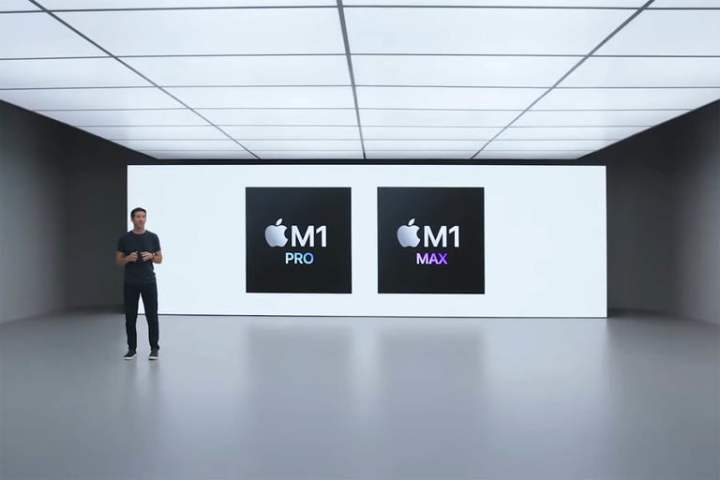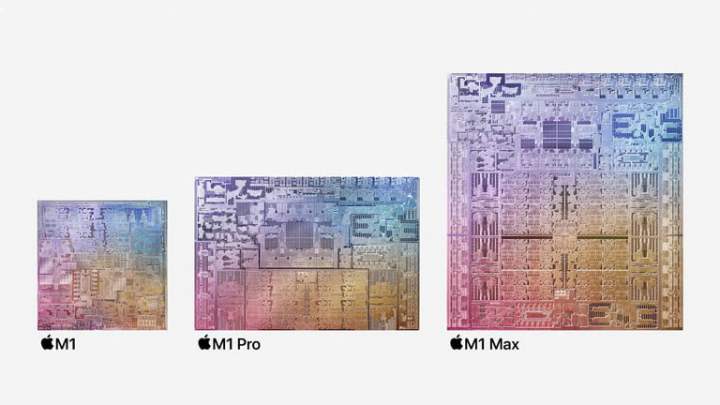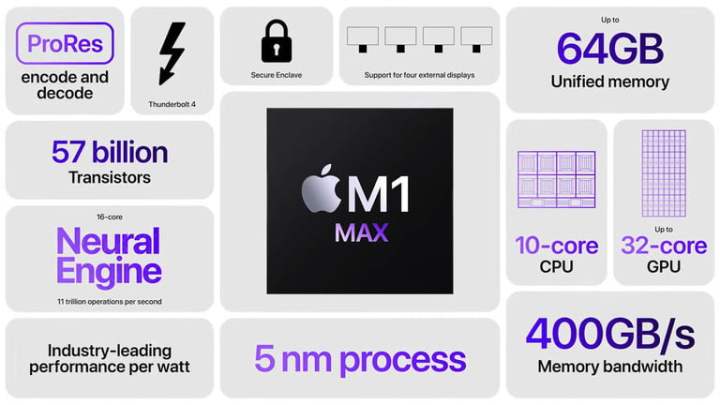At the Apple Unleashed event, the company announced two revisions to its M1 chip — the M1 Pro and M1 Max. The new designs are built on the same architecture as the M1, but they push core counts and RAM limits far past what the M1 offered. They look like fantastic new designs, but are they the best option for you?
Before products sporting the new chips start shipping, we’re here to break down the differences between the M1, M1 Pro, and M1 Max, as well as what you can expect out of each chip. Although all Apple silicon and very impressive in terms of performance, there’s one clear winner.
Pricing and availability

Apple doesn’t sell the M1, M1 Pro, or M1 Max individually, so the price is dictated by the devices each chip is inside. Here are the products and base prices that feature the M1 chip:
- MacBook Air 2020 — $999
- 13-inch MacBook Pro 2020 — $1,299
- Mac Mini 2020 — $699
- 24-inch iMac 2020 — $1,299
- 11-inch iPad Pro (5th generation) — $799
- 12.9-inch iPad Pro (5th generation) — $799
The M1 Pro and Max are newer, and they don’t overlap with products that feature the M1 right now. Here’s what’s available with the newer chips:
- 14-inch MacBook Pro 2021 — $1,999
- 16-inch MacBook Pro 2021 — $2,499
The M1 Pro and Max, despite being newer, don’t replace the M1 in Apple’s lineup. As we’ll get to in the next section, all three processors are built on the same architecture, but they meet different demands. At least until we see the Apple M2, you should expect to find M1, M1 Pro, and M1 Max products from Apple — pending demand, of course.
Specs

The M1, M1 Pro, and M1 Max are built on the same underlying architecture, but the latter two feature far greater power. They’re all system-on-a-chips (SoCs) that combine the CPU, GPU, and RAM onto a single package. That leads to higher efficiency overall, as well as decreased latency between the RAM and CPU.
They’re all based on chipmaker TSMC’s N5 node, which is the smallest manufacturing process TSMC currently has available. They combine two CPU core types — high-performance Firestorm cores and high-efficiency Icestorm cores. The main difference between them comes down to the balance of these two cores.
The M1 features eight cores total, four Firestorm and four Icestorm. The M1 Pro and Max only bump the core count to a total of 10, but they feature many more Firestorm cores. They come with eight Firestorm and two Icestorm cores, making for a much beefier processor overall.
Another big difference comes in graphics. The M1 tops out at eight graphics cores, but the M1 Pro can go as high as 16 graphics cores, while the M1 Max features a staggering 32 cores. That’s a massive step up, giving the newer MacBook Pros much-needed legs when it comes to GPU-intensive tasks like 3D modeling and rendering, as well as a boon to gaming.
The M1 Max supports much more RAM, too. The M1 can only support up to 16GB, while the M1 Max goes as high as 64GB (the M1 Pro tops out at 32GB). That’s not the same as 64GB of RAM you’d see in a standard PC, either — like the M1, the M1 Max features unified memory, which gives the CPU and GPU a single pool of memory depending on the task at hand.
That means improved CPU and GPU performance with more memory instead of carving our specific portions for each part of the chip.
Performance

Apple’s M1 chip is very performant, despite fitting inside tablets and fan-less laptops alike. Despite drawing only 10 watts, the M1 destroys Intel’s most recent Tiger Lake chips based on our testing. In GeekBench 5, the chip managed to be 8% faster in single-core performance, and that’s compared to an Intel chip that draws almost three times as much power.
Still, the M1 Pro and Max offer a big step up in performance. Although these new chips only come with two more cores, they sport more than twice the number of transistors as M1. Apple says that translates into a CPU that’s up to 70% faster overall, with around two times the GPU performance on the M1 Pro compared to the M1.
Leaked benchmarks back up Apple’s claims, too. The M1 Max showed up in GeekBench, outperforming the M1 in multi-core performance by around 56%. Keep in mind that the M1 Max and M1 Pro feature the same CPU under the hood, so you can expect similar gains with both chips. The differences come in memory and graphics.
The M1 Pro basically doubles all of the metrics of the M1. It comes with twice the memory bandwidth at 200GBps, twice the GPU horsepower, and twice the number of transistors. Short of the transistor count, the M1 Max doubles the M1 Pro, with four times as much GPU performance and memory bandwidth as the base M1.
The GPU seems to make the most difference. Although the chips aren’t available yet, a leaked benchmark from GFXBench put the M1 Max’s GPU on the level of an RTX 3080 mobile or RX 6800M graphics card. Apple said that the M1 Max could match the most powerful laptop GPUs while consuming a fraction of the power, and these results back up that claim.
We recommend waiting for independent testing before drawing any conclusions on performance. That said, the M1 Max and M1 Pro look to offer a huge upgrade over the base M1, with enough graphics power to make the most performant laptop graphics cards sweat.
Battery life

One of the reasons the M1 is so great is that it has exceptional battery life. In the M1 MacBook Pro 13, we managed an impressive 16 hours of battery life, and in the MacBook Air, 15.5 hours. That’s great performance, but Apple says the M1 Pro and M1 Max are even better.
Apple says the 14-inch MacBook Pro with the M1 Pro chip can achieve up to 17 hours of video playback — seven more hours than the previous MacBook Pro. In addition, the new machines support fast charging, allowing you to get to 50% battery life with only 30 minutes of charging.
It’s worth being suspicious of Apple’s claims here, though. The M1 Pro and M1 Max feature a far greater number of cores and memory. They’re simply more powerful chips, meaning that they’ll suck up more power. We have to wait until we can get our hands on the new MacBook Pros to test the battery life of these chips, but we suspect the base M1 will remain the battery life champion.
Ports

The M1 is a chip that only has what it needs, which means Apple had to cut a few corners. Ports are a big example of that. The M1 only has the bandwidth to support two Thunderbolt 3 ports, so a dongle or adaptor for more ports is almost a required accessory.
That’s not the case with the M1 Pro and M1 Max. These chips sport a greater number of Thunderbolt ports, including four on the MacBook Pro. That allows for up to four external displays, which is a bump over what the M1 MacBook offers.
A clear winner

The M1 is a fantastic chip, but the M1 Pro is better, and the M1 Max is the best. The M1 Max is designed to be the best version, after all.
That doesn’t mean it’s the best option for you, though. The M1, M1 Pro, and M1 Max live side by side for the time being, serving different portions of Apple’s market. If you want a performant Mac with greater battery life that can handle day-to-day tasks with ease, the M1 is a great option. If you want the best performance and don’t mind compromising, stick with the M1 Pro or Max.



